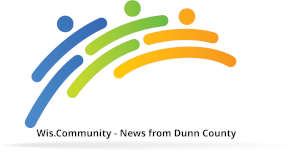State officials recently announced this year’s final state aid sent to local school districts. All but 13 of Wisconsin’s 424 local school districts received cuts in state aid.
The historic school aid reduction in Wisconsin is the second largest per pupil cut in the nation.
Local education leaders, parents and teachers are concerned about the long-term effects of such deep funding cuts.
At the same time, Governor Walker’s recent radio address touted his commitment to education. “We kept education a priority” he said. “We also passed reforms that will help protect taxpayers and improve government.” These ‘reforms’ involve changes in employee contributions to pensions and health insurance and changes in work rules.
While the governor suggests his ‘reforms are working’; education officials report otherwise. Budget cuts impact every level of education. Local schools, technical colleges and UW campuses are all coping with changes required by deep budget cuts.
Western Technical College lost $2.3 million in state aid. About two thirds was made up by increased staff payments. The college was forced to cut dental hygienist and interior design programs plus other classes and staff.
UW La Crosse employees contributed about a fifth of the total $5.2 million cut in state aid. To adjust for the remaining cuts the university delayed maintenance among other changes.
UW River Falls faces a new round of cuts estimated at $1.8 million. This comes on top of the $2.8 million cuts required by the budget earlier this summer.
UW Eau Claire saw a 23% - or ten million - drop state aid. Not included is an estimated $3.5 million cut just ordered by the state.
Higher education cuts mean students pay more tuition and graduate with more debt. Tuition increases made up only one-fifth of the budget cut. Increased employee contributions added another 30%. Universities struggle to make up the rest.
Similar compromises are made by K-12 superintendents. Almost 9 in 10 students attend a school with a net staff reduction. One in five students attends a school where five or more programs experienced staff cuts. Nearly 60% of districts increased class sizes. The budget axe fell hardest on special education, school counseling and library services.
State Superintendent Tony Evers argues for a better way to hold down property taxes without cutting investments in public education. “My Fair Funding for Our Future plan to reform the way we pay for public school [will hold] the line on property taxes”. His funding proposal has not been taken up by the Legislature.
UW Madison Dean of Education, Julie Underwood is concerned with the long-term effects of the education cuts. “This will affect young people not only in certain parts of Wisconsin but statewide. We are not preparing students for the rigors and challenges of life as an adult…there are serious consequences.”
The deepest damage may be yet to come. Two thirds of superintendents surveyed expect the same or deeper cuts next year.
Former state superintendent ‘Bert’ Grover commented on the ‘savings’ given schools to cope with the budget cuts. “Let’s not forget that most of these are one-time savings that won’t be around next year. Wait two years from now and we’ll see what we’ve done.”
These cuts did not have to happen. Two years ago we faced twice the budget deficit of this year. Revenue was dropping like a rock. But we balanced the budget. We made cuts but preserved the integrity of public education.
The current state budget spends two billion more than last year. And legislative leaders bought over two hundred million in new tax credits which add up to over two billion in tax breaks over the next 10 years.
This state budget does not pay bills coming due. Instead hundreds of millions of dollars of debt is restructured, not to gain a lower interest rate, but to completely avoid the payments. Postponed debt will cost the state nearly $90 million in interest over the next 20 years.
This budget moves large amounts of money from one fund to another. The bulk of this money comes out of the state’s general checkbook leaving less for schools, colleges and universities.
Parents pay more for tuition. Students have larger classes and fewer choices. Teachers and superintendents face seemingly insurmountable challenges. None of this had to happen.
References used in this column are available on request.
